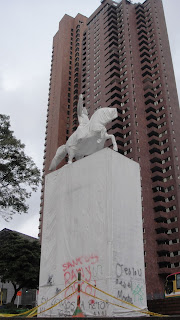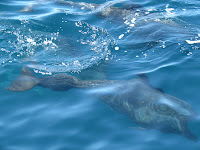West of Bogotá where the hills are a little more gentle (approx 1000-2500 m's above sea level) Colombians grow some of the world's best coffee.
There are three main cities in the region and we chose to stay at Villa Martha in Zona Cafetera Pereira.
If ever you fancy spending a few days (or weeks) in beautiful tropical mountain countryside, drinking as much of the most fabulous coffee that the human body can cope with that has been picked, dried, roasted, ground and brewed in-house, eating delicious home cooked food, learning about coffee production, chilling by the pool (or on the veranda watching hummingbirds or other wildlife feed) and being looked after by two of the warmest and loveliest people on earth (who also have loads to share about their country, the Americas and the world in general) then Villa Martha is the place!
We did all of the above, loved every moment of it and will definitely return for more of the same in the future.
And thank you to Peter and Margot, lovely to meet and spend time with you - you are an inspiration.
Rafael took us for a hands on tour of the production of coffee, from seed to cup.
1. the seeds are planted in sand
2. the seedlings are potted until they are ready to be planted (when they have 7 layers of leaves)
3. the coffee bushes flower after 2 years
4. the coffee pods are picked by hand over a period of 2 months once they have turned red
5. the pods are de-shelled, washed and left to ferment overnight
6. the beans are dried in the sun for 2 or 3 days
7. the dry skin is removed and the green coffee beans are revealed
8. the coffee is roasted and turns from...
green beans to.......... coffee as we know it
9. the freshly roasted coffee is cooled and ground
10. its ready to drink!


























